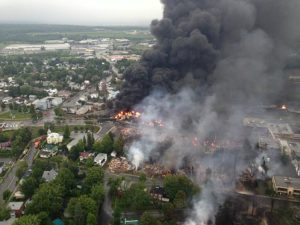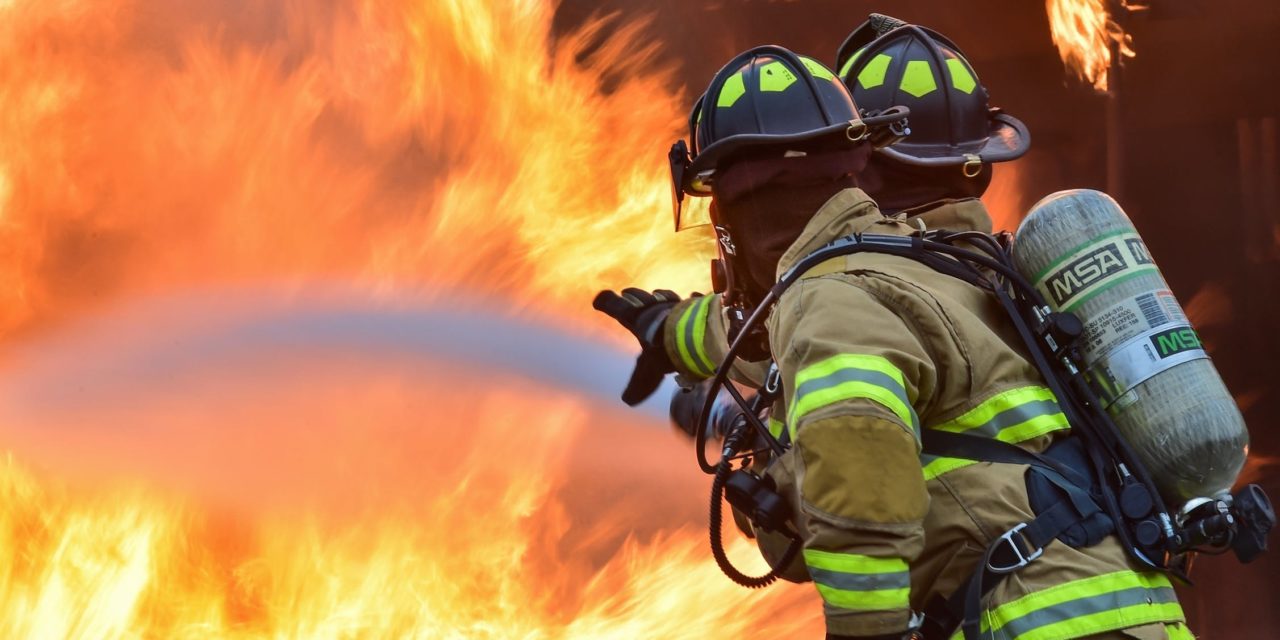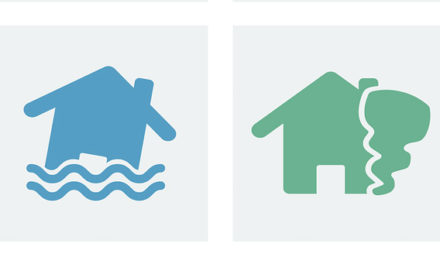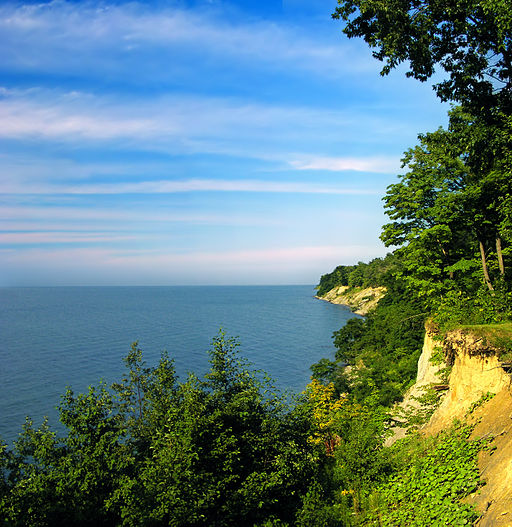On February 16, 2015, a train carrying about 70,000 barrels of Bakken crude oil from North Dakota’s shale fields to an oil shipping depot in Yorktown, Virginia derailed in Mount Carbon, West Virginia. Almost two dozen tanker cars full of crude oil caught fire, some exploding into huge fireballs that lit up the community and burned one house to the ground. At least one tanker car fell into the Kanawha River, and some oil apparently leaked into the river and a nearby creek, causing the temporary shutdown of the local water treatment plant. Less than 800 people were affected by power outages that occurred as a result of the fire. Approximately 100 to 125 residents of three nearby communities in Fayette County were forced to temporarily evacuate.
One person was being treated for potential inhalation, but no other injuries or fatalities were reported. Most evacuated residents were able to return to their homes within a few days, and documented evacuation expenses were reimbursed. Tests showed that the drinking water was not contaminated, but bottled water was provided until the water service was restored. There was also a precautionary boil water advisory while the water treatment plant was being restarted.
Officials are still investigating the cause of the derailment and three-and-a-half-day fire. They have stated that the 109-car CSX train was traveling at 33 miles per hour, well beneath the speed limit imposed last year on trains carrying crude oil. The train consisted of relatively new CPC-1232 tanker cars with modern improvements to better withstand accidents. The area was under a storm advisory at the time, and it’s not yet known if the snow was a factor.

Lac-Mégantic burning after oil train derailment courtesy of Sûreté du Québec, CC BY-SA 1.0.
Unfortunately, despite recent safety improvements, derailments like the one in West Virginia are happening more often. Just two days earlier on February 14, a crude oil train derailed and caught fire south of Timmins, Ontario. This train also consisted of newer CPC-1232 tanker cars with modern improvements, yet it took almost a week in subzero temperatures for the fires to burn out. In July 2013, a 74-car train carrying Bakken crude oil from North Dakota derailed and exploded in Lac-Mégantic, Quebec, resulting in 47 fatalities and the destruction of much of the town’s commercial core. More recently, on March 1, two train cars derailed in New Orleans. Each car was carrying 30,000 gallons of crude oil, but neither car leaked after the derailment.
Part of the reason for the increase in derailments and spills is that more rail cars are being used to transport oil. Before 2009, fewer than 10,000 tank cars of oil were transported by rail each year in the United States; that increased to more than 230,000 cars in 2012, and more than 435,000 cars in 2013 (roughly equivalent to 300 million barrels). The Association of American Railroads (AAR) noted that over 11 billion gallons of crude were shipped in 2013, but more crude oil was spilled in U.S. rail incidents that year than was spilled in the previous 37 years. Fracking has increased oil production in areas such as Montana and North Dakota, but there is not enough pipeline infrastructure there, so producers have increasingly turned to rail to transport that oil. Of course, that’s part of what new pipelines such as the Keystone XL Pipeline are supposed to fix, but it’s difficult to get new pipeline projects approved in the current political climate.
After the Lac-Mégantic derailment, the Federal Railroad Administration (FRA) and Pipeline and Hazardous Materials Safety Administration (PHMSA), along with Transport Canada, initiated a comprehensive review of safety requirements. Their assessment led to a U.S. Department of Transportation (DOT) proposed rule focused on rail car improvements, speed restrictions, and risk assessments of the nation’s rail system. One major proposal under consideration is how to improve the braking systems. The proposed electronic controlled pneumatic (ECP) brake upgrades would allow individual train cars to stop, preventing them from piling up in the event of a derailment of a car farther up the track, but AAR does not agree that ECP brakes are the best choice. We’ll have to wait and see what’s included in DOT’s final rule, which is scheduled for publication on May 12.
According to Sarah Feinberg, the acting head of the FRA, “The type of product the train is transporting is also important.” Shale oil generally contains far more combustible gas than traditional crude oil, which has a vapor pressure of about 6 pounds per square inch (psi); gasoline has a maximum of about 13.5 psi. Tests performed on the oil that caught fire in the February 16 accident before it left North Dakota showed that it contained a high level of volatile gases. A report by Intertek Group PLC showed that the oil’s vapor pressure was 13.9 psi. That exceeds the new limit of 13.7 psi that North Dakota is set to impose on oil being transported from the Bakken Shale by truck or rail. After a series of accidents in which trains carrying Bakken crude erupted into flames after derailing, North Dakota introduced new rules on shipping oil in December that take effect in April. Ms. Feinberg has supported requiring the removal of more volatile gases from shale oil before transporting it to make the cargo less dangerous, but such measures aren’t included in current or proposed federal rules.
While regulators and industry have already been working together to make safety improvements, clearly more needs to be done. Just as leaders from the energy industry, regulators, environmental organizations, consumer groups, academia, manufacturers, and labor have collaborated to modernize natural gas infrastructure and reduce methane emissions, similar efforts are needed to continue to increase the safety and efficiency of our oil infrastructure.






Recent Comments